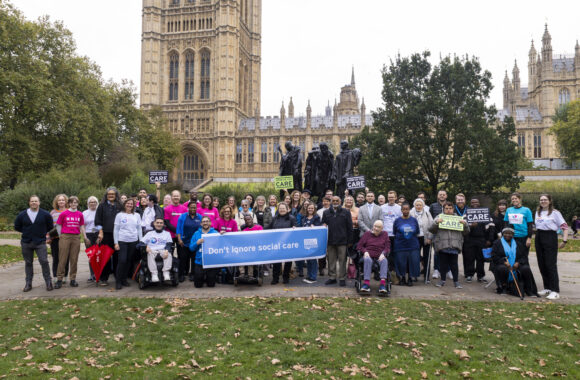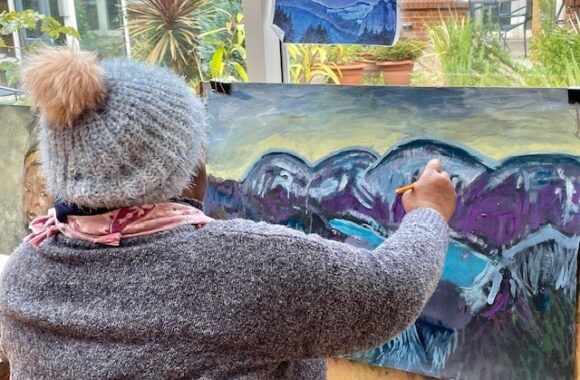
Farah is managing one of our emergency accommodation services for rough sleepers during the pandemic
At the beginning of the crisis, we identified three primary aspects to our response. First, business continuity measures in place across the organisation, both locally and cross-organisationally. Second, additional or new measures we have introduced in response to the crisis. And third, new services we’ve started since the Covid-19 crisis began.
We provide support, care and accommodation services to around 7,000 people a year through 120 different services across 30 local authorities. We work with people with mental health needs, people with learning disabilities, young people and care leavers and the homeless. We also work with people who may go in and out of hospital a lot. We also we have a number of registered care services and many integrated services delivered jointly with local CCGs and health trusts.
Our first response was to look at our business continuity plan. Even though we’d regularly reviewed and stress tested it over the past few years, we hadn’t planned for a global pandemic of these proportions I’m not sure that anyone had! What we did know, though, was the importance of our 1,000 strong staff team, so we already had plans in place to deal with staff shortages, with every service having its own local business continuity plan. These have proved crucial.
Everyone involved in our central service functions – just less than 100 people – moved to home working, with appropriate remote working technology. We introduced daily senior leadership calls where we monitored staff shortages and suspected customer cases at each and every service. We were able to do this thanks to the data we collated daily and made amendments to our reporting systems to enable this. We’ve seen throughout this that all the investment we’ve made in our IT and online systems over the past two – three years have really paid off.
We RAG-rated every service in terms of acuity of need – some of them can run with fewer staff if needed, but others absolutely cannot. At its height, our staff absence rate reached 18%, but we were able to cover that thanks to the incredible dedication of staff working overtime and covering shifts. The dedication of our frontline staff has been amazing; their viewpoint has been, “Of course I’m going into work to support our clients because if I don’t, then who is?”
Now we’ve got access to testing, that pressure has eased a bit, as any staff member who thinks they may have Covid-19 can access and get the results of their test, usually within 48 hours, which means they can come back to work quicker if the test is negative. Previously, if they had symptoms, they had to isolate for at least seven days.
The other huge issue at the start of the crisis was PPE. We encountered the same difficulties in accessing PPE as most social care providers early on, although now we’ve got a good and steady supply. We’ve been able to source PPE through local authorities and networks and have also built up an extensive central supply, through both donations and paid orders, in case any services are struggling to access it locally.
From the start of the crisis, we also delivered mandatory staff training around infection control and how to use PPE safely. We set up a resource centre dedicated to Covid-19 on our intranet, with FAQs, guidance on PPE and how to use it in different settings, how to support people when they’re self-isolating and how to encourage social distancing. Then every week we share an internal email wrapping up all we’d been talking about that week. There’s been so much information for staff so we’ve had to manage it quite tightly.
We’ve done a lot around wellbeing for our staff, introducing a wellbeing offer that can be accessed online, as well as promoting telephone counselling and online support. We already did a lot of reflective practice across the organisation anyway, but that has become even more important. We’ve provided mental health resources and wellbeing checks for people working in services as well as those working from home. We need our staff to be well and feel confident, safe and protected going into work, so we’ve invested in this. We’ve just asked all our staff what they think of our response. Over 40% have responded and it’ll be interesting to see where we’ve done well and where things could have been better.
We’ve also increased our communications to our customers with a special edition of our customer magazine and information about support networks and available help, while our Tenant and Landlord Panel is meeting virtually so customers can feed in about their experiences.
One of our challenges, particularly for clients with mental health issues, has been asking them to do the opposite of what we normally ask them to do. As part of our recovery approach, we are usually very much promoting the importance of social contact, engagement and not isolating yourself. Now we’re having to tell people to do the opposite so it’s been a big shift in the way we support people. We’ve tried to do this by being as creative as possible.
In our learning disability services especially, staff have been acting like family for many of our clients. For people with particularly high needs, consistency with staff has been critical to helping them to stay safe and well. In some services there was a rise in anti-social behaviour, because people were struggling with the sudden changes or didn’t have the capacity to understand what was going on. So we’ve had to put things in place to keep their engagement really high. Our staff have been hugely creative and have really excelled at supporting social distanced activities – yoga, badminton and arts to name just a few,
We wanted to recognise and celebrate the commitment and dedication of our staff so we introduced our own internal communications campaign, ‘Social Care Heroes’, encouraging people to share and celebrate what they’ve been doing. We’ve had regular messaging from senior leaders, ran weekly themed competitions encouraging innovation and adapted our quarterly staff awards scheme in light of the pandemic. This has enabled staff to nominate colleagues for the work they’ve been doing, and how they’ve been supporting clients who can’t see family or friends. The nominations have been truly heart-warming.
One of the additional things we’ve had to do during this period is to find new food sources for our customers. Beforehand, a lot of our services and sites relied on food donations that they usually accessed through local restaurants or chains, like Prêt a Manger, or through foodbanks. We had a lot of local arrangements in place. However when restaurants and cafés shut their doors, so did our supply chain.
Staff who normally work in our Business Development team became our food donation team, working with a many different local partnership organisations. Within the first day, they had arranged for a delivery of 1.5 tonnes of food to different services. We’ve been supported by so many generous charity and corporate partners, including Nando’s, who donated 600 meals to our South London homelessness services, when they reopened for delivery last month. It’s made a real difference to people in our services who may have struggled to get food otherwise. We’ve also ran a public fundraising campaign to raise money for food and other essential items for our most vulnerable customers.
Finally, our new services: since the end of March, we’ve been supporting the GLA by delivering temporary emergency accommodation for rough sleepers. We are currently running two hotel services in south London accommodating 250 former rough sleepers. It was a quick turnaround – we had the first person move in with 72 hours of the GLA asking us to set it up. Both are protect sites, which means that they are for rough sleepers or homeless people who have health conditions that can make them particularly vulnerable to the effects of Covid-19.
They have food delivered to their door three times a day and staff on site to assist them. Now, we’re working with partners to try and ensure that, wherever possible, they don’t return to the streets but can be moved on to more suitable accommodation. We’re looking at each individual’s needs and working on a case-by-case basis to move them on in a positive and sustained way.
The last three months have been like nothing we, or anyone else, has seen before. We know the challenge is likely to be far from over but we are pleased at how we have weathered the storm so far and the measures and the systems we now have in place. As we move forward, focus will remain on protecting not only the physical health but crucially also the mental health of both those who work for and those we support. There’s a phrase that in the context of the pandemic, we may all be in the same storm but not all of us are in the same boat. We are keeping this firmly in mind as we keep focused on safely supporting our customers, some of the most vulnerable (even at the best of times) within our communities.
You can read the original blog here.

